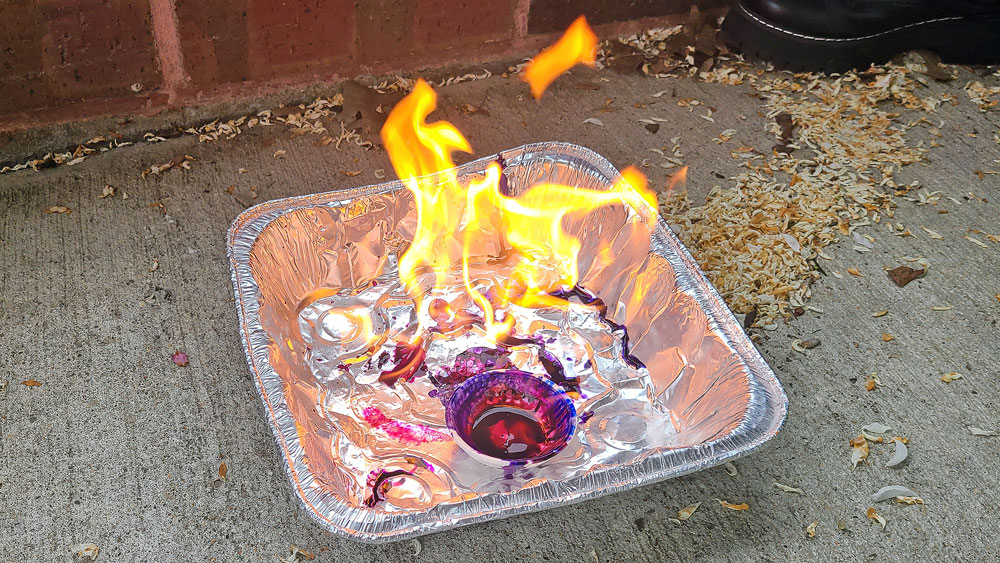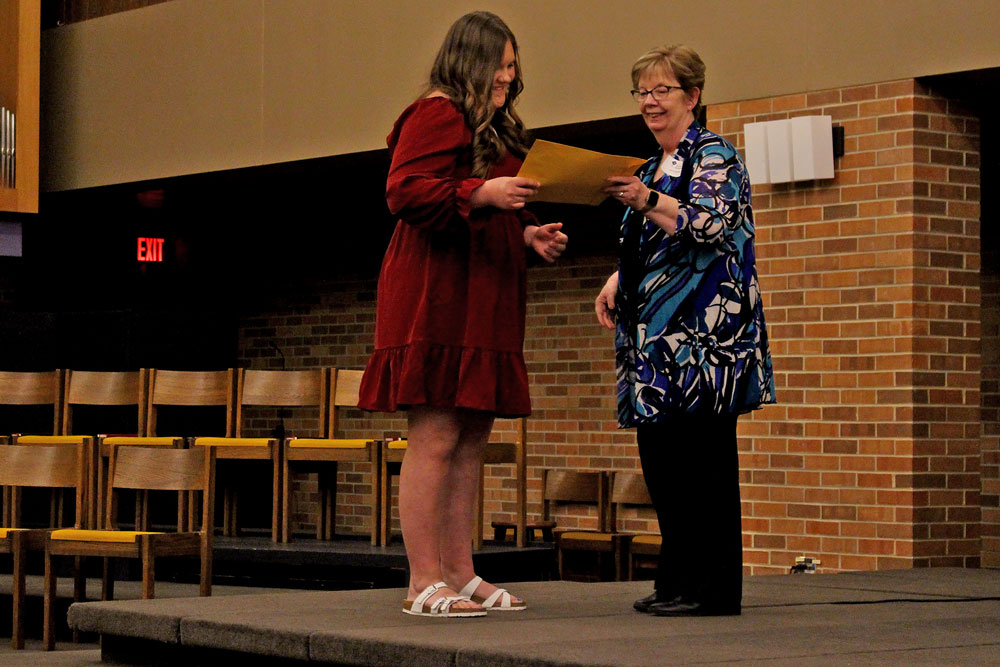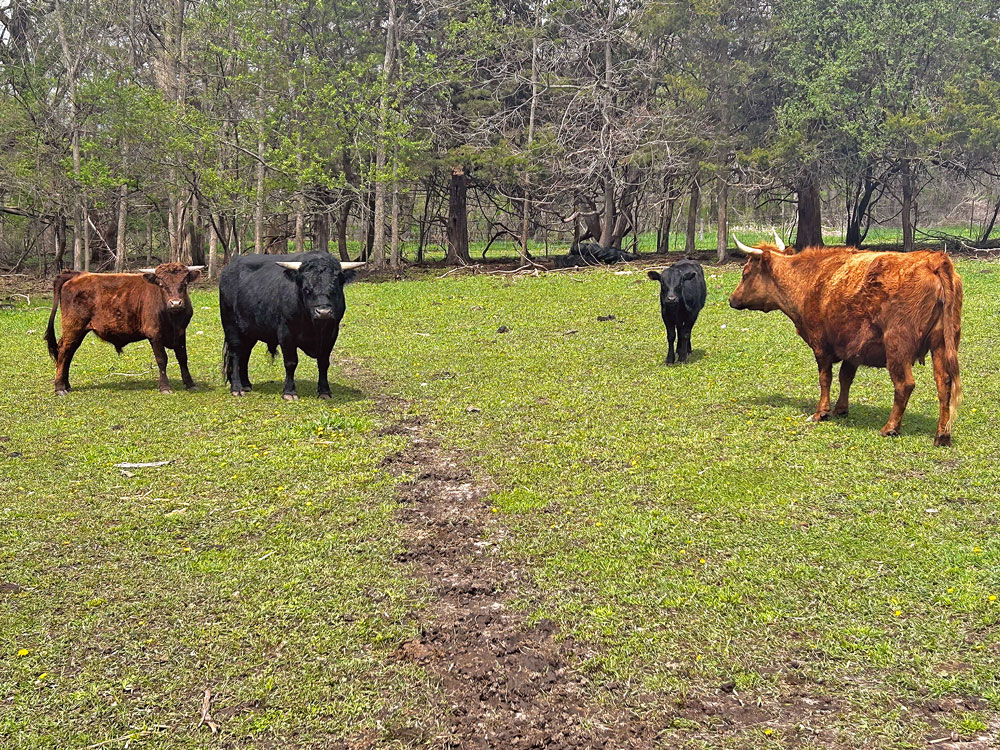Area crops good, slightly ahead of schedule

By James Grob, jgrob@charlescitypress.com
After a winter that seemed to last forever — followed by a June that set area records for precipitation — the corn and soybean crops in this part of Iowa appear to be in good shape.
“We’ve been really lucky,” said Terry Basol, Field Agronomist and crop specialist for Iowa State University Extension and Outreach, who works out of Nashua. “We’ve had really good weather lately to help everything out. Pretty good temperatures and low stress for development of both corn and soybeans.”
There have been pockets around the state that haven’t been as fortunate.
“We’ve seen some drought conditions in isolated places,” Basol said. “The bulk of the dry acres are in southeast Iowa, and some in southwest.”
Basol said there were other isolated pockets of extremely dry conditions in the northwest corner of the state,
There have already been a handful of drought meetings held by ISU Extension in places, where Basol said they inform growers of the conditions and what to expect. Another drought meeting is scheduled for next Monday near Chariton in south central Iowa. Topics to be discussed during the meeting include crop growth and development under drought conditions, feeding drought damaged crops, silage and crop insurance considerations.
“Some nice, timely rain is what we’ve gotten here more recently,” said Basol, who added that corn development might even be a little ahead of schedule in the area. “In some areas we might be a tick ahead of schedule. The farther north we go, the planting was a little later.”
Due to the late and wet spring, many area crops were planted late this year. According to the National Weather Service, Charles City recorded the wettest June on record, with nearly 12 inches of rain. The normal is 5.26 inches. Just over six inches fell in 2017. In June and early July there was concern about the onset of some crop diseases, such as Grey Leaf Spot fungus, and there was some herbicide application in the area. The fungus survives in corn residue, and spores are spread by wind and splashing rain. Hybrid susceptibility and weather conditions strongly influence disease development.
“The cooler temperatures kind of pushed that off,” Basol said.
Basol said that farmers will need to keep an eye on the soybean fields over the next few weeks for soybean aphids, in case they need to be treated with insecticide.
Iowa Secretary of Agriculture Mike Naig commented earlier this week on the Iowa Crop Progress and Condition report released by the USDA National Agricultural Statistical Service.
“We continue to see spotty showers across the state with some areas receiving strong storm and other areas, especially southern Iowa, extremely dry,” Naig said. “Subsoil moisture is now 31 percent short or very short in the state and in south central and southeast Iowa over 85 percent of the land is short or very short of moisture.”
According to the report, Iowa farmers had 5.5 days suitable for fieldwork during the week ending Aug. 12.
Activities for the week included harvesting hay and oats for grain, spraying for aphids, and moving grain.
Topsoil moisture levels rated 12 percent very short, 23 percent short, 62 percent adequate and 3 percent surplus. Subsoil moisture levels rated 10 percent very short, 21 percent short, 66 percent adequate and 3 percent surplus. Subsoil moisture levels in south central and southeast Iowa remain critical with over 85 percent rated short to very short.
Seventy-three percent of the corn crop has reached the dough stage or beyond, nine days ahead of the 5-year average. Corn dented was at 22 percent, nine days ahead of last year. Corn condition rated 75 percent good to excellent.
Ninety-six percent of the soybean crop was blooming with 89 percent setting pods, over a week ahead of both last year and the average. Soybean condition declined slightly to 72 percent good to excellent.
Basol said that typically in this section of Iowa, the corn harvest will start in mid-to-late October and run through November.
“We might be a little bit ahead of that,” he said. “Some of the more southern area might be starting in late September or early October. A lot depends on the weather and the field conditions.”
Basol said that soybeans could start harvest as early as mid-September this year.
“We just want some nice, low-stress weather conditions so it doesn’t develop too rapidly,” Basol said. “We want it to develop slow so it will accumulate the dry matter as much as possible. The higher the dry matter, the higher the yield.”









Social Share